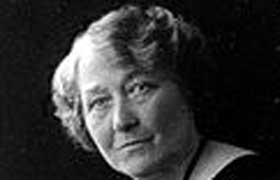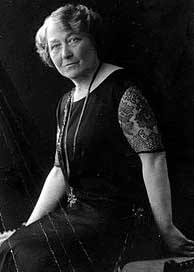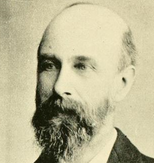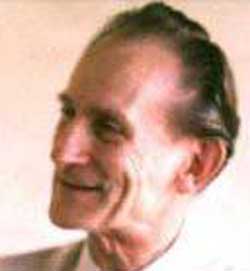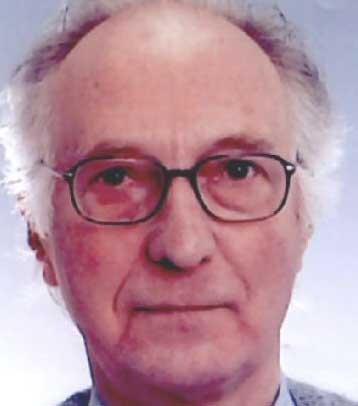The phenomenon of dying people experiencing visions of deceased relatives came to public notice in the early twentieth century, with the publication of deathbed observations by obstetrician Florence Elizabeth Barrett. This article describes more recent research by psi investigators, in particular Karlis Osis and Erlendur Haraldsson.
Contents
Introduction: Barrett’s Deathbed Visions
Visions that some people have round the time they die have long puzzled those who have been present at deathbeds. Deathbed Visions, by Sir William F. Barrett, a professor of physics at the Royal College of Science in Dublin, was the first book to appear on the subject.1Barrett (1926). It was mostly based on the observations of his wife Florence Elizabeth Barrett, an obstetrician, of women who died giving birth: some described visions of deceased relatives that had seemingly arrived to receive them. Here is one such account:
Suddenly she looked eagerly towards one part of the room, a radiant smile illuminating her whole countenance. ‘Oh, lovely, lovely,’ she said.I asked, ‘What is lovely?’ ‘What I see,’ she replied in low, intense tones. ‘What do you see?’ ‘Lovely brightness – wonderful beings.’ Then – seeming to focus her attention more intently on one place for a moment – she exclaimed, almost with a kind of joyous cry, ‘Why it is father! Oh, he is so glad I am coming; he is so glad.
Another case that occured shortly before this woman died:
Her husband was leaning over her and speaking to her, when pushing him aside she said, ‘Oh, don‘t hide it; it isso beautiful.’ Then turning away from him towards me, I being on the other side of the bed, Mrs. B. said, ‘Oh, why there is Vida,’ referring to a sister of whose death three weeks previously, she had not been told. They had carefully kept this news away from Mrs. B. owing to her serious illness.
Barrett noted the special significance of cases in which the dying person experienced a vision of a friend or relative of whose recent death they had not been informed.
Accounts of deathbead visions and links to books and articles on the topic can be found here. The principal investigations since Barrett are described below.
Investigations by Osis and Haraldsson
Psi researcher Karlis Osis started to gather new cases in the 1950s. His interest stemmed from an experience he had in his family when he was a young man in his native Latvia. Could these visionary experiences tell us something about what lay ahead after the death of the physical body? Osis once commented: ‘Pay particular attention to phenomena at the beginning and at the end of life. They may tell us what was before and what may follow’.2Personal communication to Erlendur Haraldsson.
Osis saw the other side of that coin. Could there be a medical explanation? Had those having deathbed visions been receiving medicine that was known to cause hallucinations? Could these be hallucinations caused by high temperature or illness? What effect did religion have on these experiences? There were more questions of this kind. He conducted a questionnaire survey of deathbed visions reported to physicians and nurses and published his results in a monograph in 1961.3Osis (1961).
Then around 1970, Osis unexpectedly obtained sufficient funds to do a larger study of deathbed visions and invited Erlendur Haraldsson to join him. To address the question whether deathbed visions only occur to those who live in the Christian world, it was decided to do the study both in the United States and in a non-Christian Asian country. The investigators considered Buddhist or Hindu countries, eventually settling on India, where they would benefit from contacts with themedical community made by fellow researcher Ian Stevenson.
Questionnaire and Procedures
Osis and Haraldsson began by contacting hospital wards where many people died. They met with doctors and nursing staff and distributed a questionnaire, to learn whether they had observed hallucinations in dying patients, and their content, and if the patients had mentioned people or described heavenly surroundings. They also asked about experiences of patients who had lost consciousness, almost died, and returned to life. They enquired about incidents where the emotional well-being of patients improved markedly just before dying. Healthcare workers who had observed such cases were followed up Afor a thorough interview. In all, 435 doctors and nursing staff were interviewed in India and 442 in the USA.
Main Characteristics
The majority of visions just before death proved to be of departed relatives, and, less frequently, of religious or celestial beings. The dying person sensed that these beings had come to take him or her into another world. Often the patient’s well-being drastically impoved when this happened. In many instances the patients had been worried or afraid to die. After the visions they usually felt happy to go.
Here is an example from the USA:
A female cardiac patient in her fifties knew that she was dying and was in a discouraged, depressed mood. Suddenly, she raised her arms and her eyes opened wide; her face lit up as if she was seeing someone she hadn’t seen for a long time. She said, “Oh, Katie, Katie.” The patient had been suddenly roused from a comatose state, she seemed happy, and she died immediately after the hallucination. There were several Katies in this woman’s family: a half-sister, an aunt, and a friend. All were dead.
Below is another example of an American, who suffered from a painful, deadly illness. The witness reported the following:
Well, it was an experience of meeting someone whom he deeply loved. He smiled, reached up, and held out his hands. The expression on his face was one of joy. I asked him what he saw. He said his wife was standing right there and waiting for him. It looked as though there was a river and she was on the other side, waiting for him to come across. He became very quiet and peaceful—serenity of a religious kind. He was no longer afraid.
Some patients reached an emotional high shortly before dying, a great feeling of well-being. Furthermore, the data showed that a great number of these patients were not under the influence of factors that were known to cause hallucinations. Osis and Haraldsson constructed a scale or index number for factors known to cause hallucinations, finding that these visions were not connected to the scale. In fact, if the patients were high on this scale, they were less likely to have visions about someone coming to fetch them, but more likely to have confusing hallucinations – a highly interesting finding.
Cross-Cultural Differences
In America as well as in India it was common that dying patients saw departed loved ones that invited the patients to follow them to another world. In one aspect there was a cross-cultural difference: in India it was more common that religious beings appeared to the patient than persons. It was also rather common that beings appeared that wanted to take them to another world, but they did not want to go.
Such cases possibly reflect the Hindu religious belief that messengers of the Lord Yama (god of death) appear at a deathbed to fetch the dying person to another world. These Yamdoots appear in a disguise that accords with the degree of morality of the person’s life, somewhat reminiscent of the Catholic purgatory: a Yamdoot appearing at the end of a life full of sin would come in an ugly or threatening form.
Osis and Haraldsson also explored the influence of religious affiliation on the observations of interviewees. The observations were more frequently made by nurses than by doctors, simply because nurses spend much more time with patients than doctors do. The most thorough cases received from doctors were those where the dying person was a relative.
It is worth bearing in mind that the average age of the dying patients at this time was 62 years in America and 42 in India. That may in part explain why Indians often struggled when a being came to fetch them to another world: younger people are more reluctant to die than older people. In India it was much more common than in the USA to die of infectious diseases and infections following an operation.
In other ways the results of the separate studies were similar. The main reason for the majority of deathbed visions is not found in medication, fever or other factors known to sometimes cause hallucinations. That is an important finding and may be considered, not proof, but a sign of the reality of another existence. The studies appear to concord with the findings of research into the near-death experience – the visions of some people who almost die – which in recent years has been conducted at university hospitals in America, England and the Netherlands.
The results were also remarkably similar to the findings of the preliminary study of deathbed visions carried out by Osis in the USA several years earlier.4Osis (1961). In this initial study, 79% of the visions concerned someone coming to fetch the dying person, compared with 79% in the Indian sample and 69% in the USA.
There were a few cases where the patient sensed that somebody had come to fetch her – against expectations, as she was not expecting to die, nor was expected to by doctors or relatives – and died shortly afterwards. Here is an example:
A seventy-year-old patient had seen her deceased husband several times and then she predicted her own death. She said that her husband had appeared in the window and motioned her to come out of the house. The reason for his visits was to have her join him. Her daughter and other relatives were present when she predicted her death, laid out her burial clothes, laid down in bed for a nap, and died about one hour later. She seemed calm, resigned to death and, in fact, wanted to die. Before she saw her husband she didn’t speak about imminent death. Her doctor was so surprised by her sudden death, for which there were no sufficient medical reasons, so that he checked if she had poisoned herself. He found neither signs of poisoning nor any such drugs in the house.
Here are additional examples about patients that see visions just before dying:
A 68-year-old Polish housewife was afflicted with cancer. Her mind was clear. She was settling some financial matters and asked for her purse. She had not thought of dying. Then she saw her husband who had died twenty years before. She was happy, with a sort of religious feeling and, according to her doctor, she lost all fear of death. Instead of fearing death, she felt it to be the logical, correct thing. She died within 5 or 10 minutes.
An Indian physician in a Muslim hospital reported the following case:
A male patient in his fifties, college educated and a Christian, was going to be discharged on the seventh day after an operation on a fractured hip. The patient was without fever and was not receiving any sedation. Then he developed chest pain and I was called to him. When I came he told me he was going to die. “Why do you say so? Having a little pain in the chest does not mean you are going to die.” Then the patient told how immediately after the pain in the chest started he had had a hallucination, but still remained [in] his full consciousness. He said he felt himself for a few seconds to be not in this world but elsewhere. At that time he saw Christ coming down through the air very slowly. Christ called him, rather, waved his hand that he should come to him. Then Christ disappeared and he was fully here. The patient told me he would die within a few minutes. He seemed quite happy and said that the aim of his life had been achieved by Christ calling him to Him. “I am going”, he said, and departed a few minutes later.
In the following case Yamdoot appeared to a Hindu high school educated clerical worker, who was hospitalized with an infectious disease. His temperature was high, he was mildly affected by drugs, and his nurse considered his consciousness to be clear, when he exclaimed:
“Somebody is standing there! He has a cart with him so he must be a Yamdoot! He must be taking someone with him. He is teasing me that he is going to take me! But, Mamie, I am not going; I want to be with you!” Then he said someone was pulling him out of bed. He pleaded, “Please hold me; I am not going.” His pain increased and he died.
Finally, here is an example of a ten year old girl in a hospital in Pennsylvania recovering from pneumonia. Her temperature had subsided, and she seemed to be past the crisis.
The mother saw that her child seemed to be sinking and called us [nurses]. She said that the child had just told her she had seen an angel who had taken her by the hand—and she was gone, died immediately. That just astounded us because there was no sign of imminent death. She was so calm and serene—and so close to death!
At The Hour of Death
A full description of Osis and Haraldsson’s study was published by Avon books under the title At the Hour of Death.5Osis & Haraldsson (1977a). It was translated into German, French, Dutch, Italian, Spanish, Portuguese, Swedish, Norwegian, Icelandic, Japanese, Persian and Malayalam. A later edition from Hastings House, with a new chapter by Osis, was reprinted by White Crow Books in 2012.6Osis & Haraldsson (1997).
Most reviews of the book have been positive. An exception was an article by David H Ingvar, a professor in clinical neurophysics at the University of Lund, which appeared in the newspaper Sydsvenska Dagbladed. Ingvar claimed that these visions were caused by lack of oxygen and could be produced in healthy people by reducing oxygen flow to the brain, as happened accidentally with airline pilots at high altitude.
Haraldsson wrote to Ingvar asking for sources, and was told only that in American experiments by the US Air Force on the effects of varying oxygen levels, hallucinations had ben observed on the edge ofthe visual field. Ingvar could not provide details of the experiments, but in subsequent correspondence provided the name of a Swedish medical contact, who in turn put Haraldsson in touch with a friend, James C Culver, head of the Air Force School of Aviation and Space Medicine in San Antonio, Texas.
Culver was cooperative, and had people search in the database of his organization for sources on the potential effect of lack of oxygen on hallucination. His answer, dated 8 May 1981, was the following:
The Aeromedical Library of the USAF School of Aerospace Medicine, Brooks Airforce Base, Texas, has done a thorough search for the sources you asked for. I regret to inform you that no sources have been found that link the lack of oxygen, anoxia, to hallucinations.
An article by Haraldsson pointing out that Ingvars criticism was invalid was published in Sydsvenska Dagbladet on 8 September 1981.
Investigations by Peter and Elizabeth Fenwick
It was some years later, in 2008, when the next book on deathbed visions was published. This was The Art of Dying, A Journey to Elsewhere by Dr Peter Fenwick at the Institute of Psychiatry, London, and his wife Elizabeth.7Fenwick & Fenwick (2008). The pair interviewed some forty nursing staff in hospices, who often heard about visions in patients near the time of death. The nursing staff believed that the end-of-life-experiences– ELEs, the Fenwicks called them – were a prognostic indicator for approaching death. The Fenwicks concluded: ‘The carers we talked to in all our studies felt confident that ELEs are not drug induced’.8Fenwick & Fenwick (2008), 19.This important study, more thorough than any other published so far, supports the findings of Osis and Haraldsson in At the Hour of Death.
Investigations by Una MacConville
In 2017, Una MacConville carried out a study with Irish health care professionals. The carers reported that 45% of their patients spoke of visions of deceased relatives, often joyful experiences that bring a sense of peace and comfort. MacConville concludes that these experiences ‘provide an interesting perspective on the continuing importance of deceased family members and friends in the lives of the living’. 9MacConville (2017), 18.
Anecdotal Reports
Haraldsson has given numerous lectures about deathbed visions in many countries. Frequently, audience members approach him afterwards to describe having witnessed such visions in family members or friends.
Bi-Polar Model of Deathbed Visions
Information obtained in Osis’s pilot study and other sources was used by Osis and Haraldsson to formulate a model or series of hypothesis concerning deathbed visions.10Osis & Haraldsson (1977a). This model is bi-polar and sharply contrasts two mutually exclusive concepts: (1) the survival hypothesis – death is the transition to another mode of existence, and (2) the destruction hypothesis – death is the utlimate destruction of the personality. These contrasting concepts were divided into ten sets of hypotheses dealing with the sources of deathbed visions, influence of hallucinogenetic factors, content of deathbed visions, influence of psychological factors, and the variability of content across individuals and cultures. The Osis and Haraldsson data, gathered in three surveys across a fifteen-year period in America and India, as well the studies of the Fenwicks and MacConville, supports the after-life hypothesis as formulated in the bi-polar model.11For further details see Osis & Haraldsson (1977a, 1977b),
Erlendur Haraldsson
Literature
Barrett, W.F. (1926). Death-Bed Visions. London: Methuen. [Reprinted 2011 by White Crow Books, Hove, UK.]
Fenwick, P., & Fenwick, E. (2008). The Art of Dying. London: Continuum.
Haraldsson, E. (1999). Obituary: Karlis Osis. Journal of the Society for Psychical Research 63, 127-28.
MacConville, U. (2017). Near-to death experiences: Gatherings of the living and the dead. Proceedings from the 2013 Archaeology of Gatherings (International Conference at Sligo, Ireland), 12-19. Oxford: Bar Publishing.
Osis, K. (1961). Deathbed Observations by Physicians and Nurses (Parapsychological Monographs No. 3). New York: Parapsychology Foundation.
Osis, K., & Haraldsson, E. (1977). At the Hour of Death. New York: Avon Books.
Osis, K., & Haraldsson, E. (1997). At the Hour of Death: A New Look at Evidence for Life after Death (3rd ed). [Revised ed. of At the Hour of Death, Avon Books, New York, 1977.] Norwalk, Connecticut, USA: Hastings House. [Reprinted 2012 by White Crow Books, Hove, UK.]
Osis, K., & Haraldsson, E. (1977b). Deathbed observations by physicians and nurses: A cross-cultural survey. Journal of the American Society for Psychical Research 71, 237-59.
